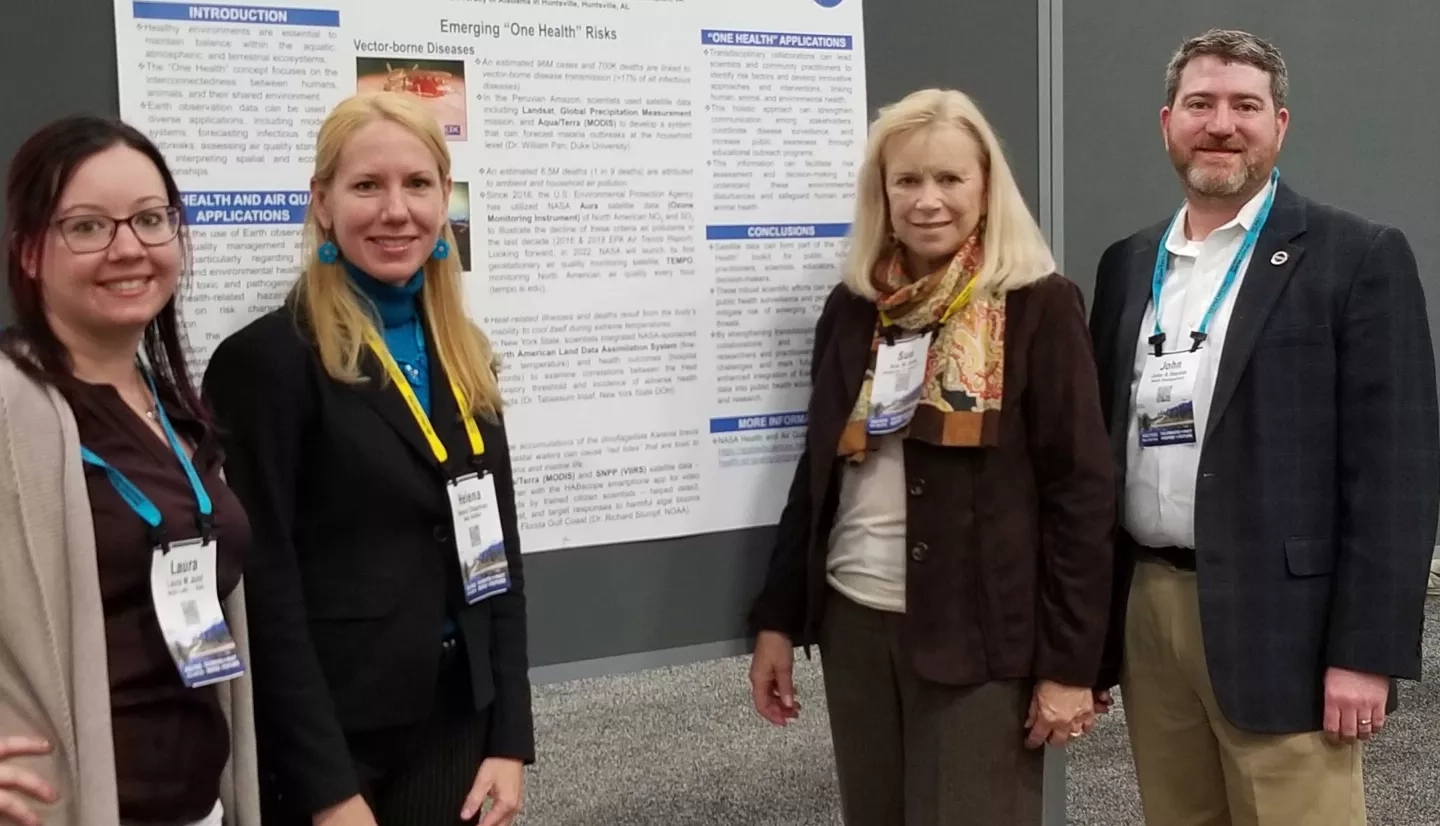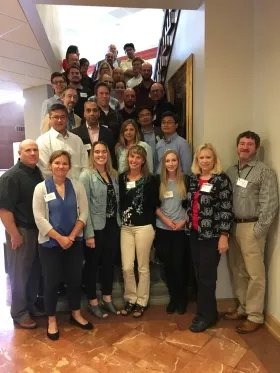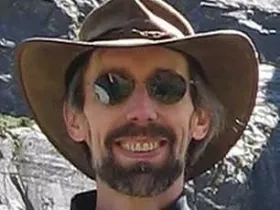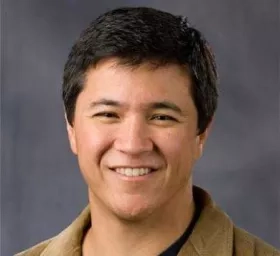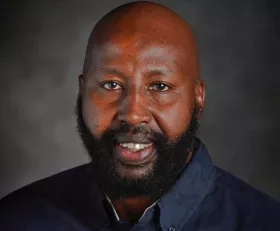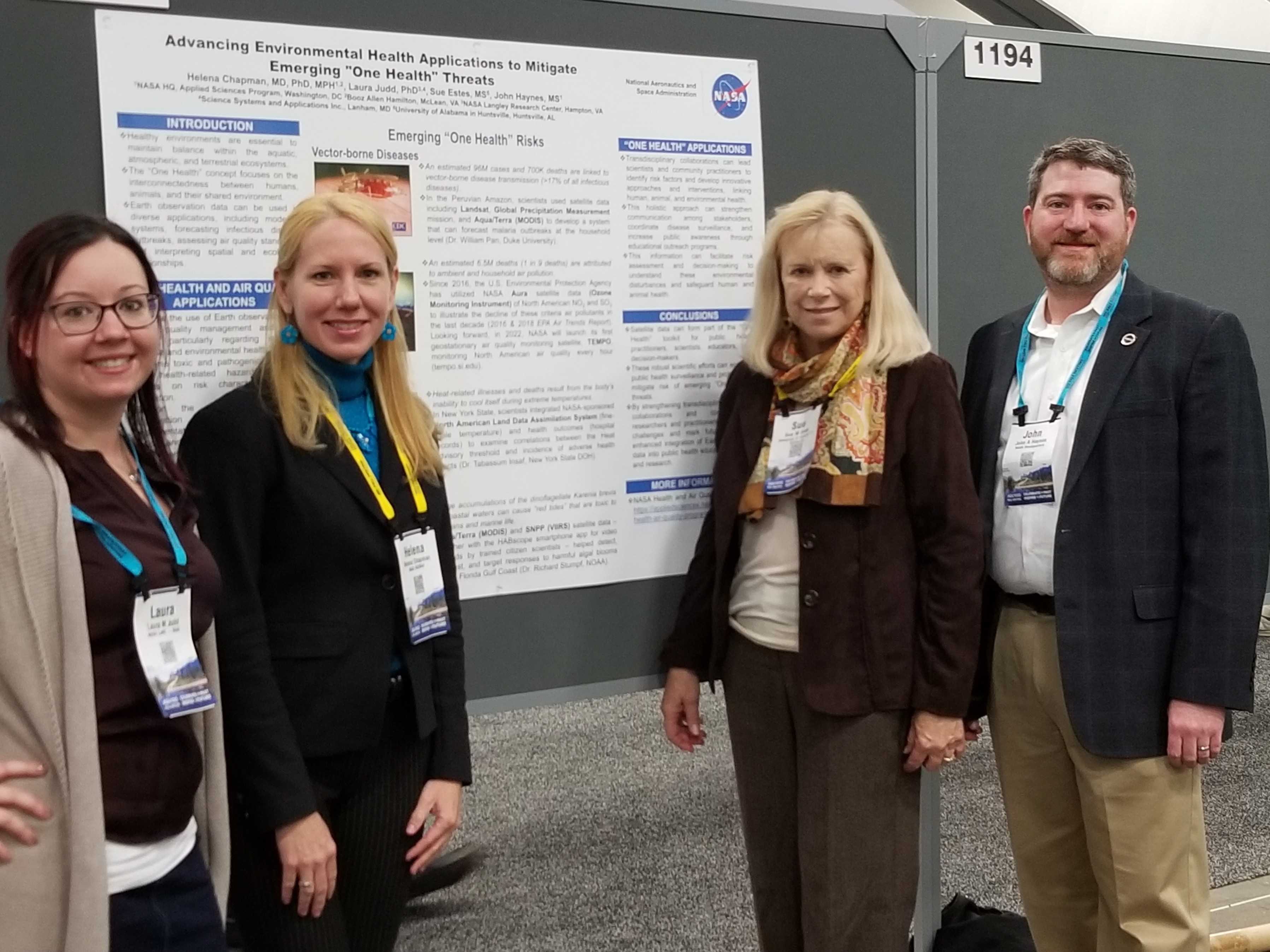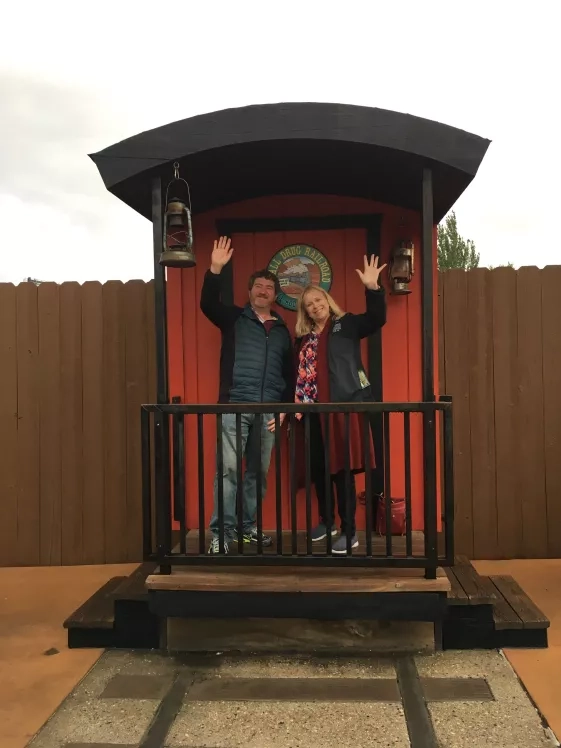Sue Estes is a NASA Exceptional Public Service Medal recipient, a public health champion, and a coastline connoisseur. In October 2021, she is celebrating her retirement from her role as senior associate program manager for NASA’s Health and Air Quality program area.
Before she embarks on her next adventures, we asked Estes to reminisce on her time with NASA. Estes first joined the Applied Sciences Program in 2006, where she has contributed 15 years of experience working in public health.
“I have a health background, but I sort of fell into this career at NASA,” Estes said. She was working in Huntsville, Alabama, managing health-focused projects for the U.S. Army. That is when she received the call from NASA.
“The Health and Air Quality program area needed some temporary help. But it was one of those things that was meant to be – I ended up staying for 15 years,” Estes said. Since she began her tenure with the Health and Air Quality program area, she commented that the program has grown significantly through the project portfolio and stakeholder partnerships.
“The Health and Air Quality program area had five projects when we first started,” Estes said. “But what we saw was there was a need for NASA data in public health – so every year, we kept adding more.”
“What can I say to encapsulate Sue’s stellar 15-year career at NASA? The Health and Air Quality program would not have achieved its tremendous success without Sue’s incredible service and leadership,” said John Haynes, program manager for the Health and Air Quality program area. “Through personal interactions with our principal investigators and partner organizations, she helped bring NASA to the forefront as a leading agency within the public health community. She made the impossible seem easy.”
Over the past few years, Estes has served as a mentor for two post-doctoral fellows of the American Association for the Advancement of Science (AAAS) and two undergraduate interns for the NASA summer internship. Through these direct interactions, she has offered information about the Health and Air Quality program area, supervised assigned tasks, and shared lessons learned to assist with career guidance.
While at NASA, Estes’ work focused on establishing partnerships between NASA environmental researchers and public health professionals in academia and federal, state and local government. We asked a few of those researchers and health officials that she has worked with to “sign her yearbook” by sharing their thoughts on her impressive career and contributions.
"Sue was great to work with. She tracked everything in our project with great charm, but she also felt it was essential to meet people and understand what is going on,” said Richard Stumpf, oceanographer at the National Oceanic and Atmospheric Administration’s (NOAA) National Centers for Coastal Ocean Science. “We had a project on red tide in Florida, which can cause respiratory irritation even in a healthy person. She showed up at the beach when we started our forecast system in the middle of the worst red tide in 13 years. The project has since turned into a success, now an operational forecast in NOAA.”
“Sue is patient and kind, but in a way that I always felt was genuine and that she had the best intentions of investigator and his/her teams in mind,” said William Pan, Reid Associate Professor of Population Studies and Global Environmental Health at the Duke Global Health Institute. “The HAQ team at NASA is amazing and in large part to the way Sue has handled herself professionally and personally. I particularly appreciate the mixture of business and social networking she integrates at our NASA meetings.”
“In 2012, I joined Sue as the junior associate for Public Health and Air Quality and she went on to teach me all I needed to know about the job,” said Ali Omar, now the head of the Lidar Science Branch at NASA’s Langley Science Directorate. “I do not remember any occasion in my seven years as Associate when Sue was not able to assist me with a task or answer a question I had about the program. She did this while fostering a family environment within the group with genuine care for all of us.”
As it turns out, the feeling is mutual. Estes said that it was both her teammates and the work itself that made her role at NASA the opportunity of a lifetime.
“It was a dream job – it was hard at times, but it turned out to be one of the best groups of people I could have asked to work with,” Estes continued. “One project when I first started was tracking ocean currents and weather conditions for search and rescue – it’s still in use by the U.S. Coast Guard today. For every project I could see how it’s going to help people, that it would be used to make a difference.”
Her commitment to furthering NASA’s contributions to public health did not go unnoticed. In 2020, she was awarded NASA’s Exceptional Public Service medal for her lasting impact on the success of NASA’s goals.
According to Lawrence Friedl, director of the Applied Sciences Program, the honor was well-deserved. “Sue Estes is one of the reasons the Health and Air Quality program area is as robust as it is today – her ability to drive Earth science applications forward while building relationships across communities has been invaluable,” Friedl said. “Her retirement marks a true celebration of her career and the lasting impact she’s had with the Applied Sciences Program.”
When Estes is not using NASA Earth observations to build long-lasting partnerships that help protect public health, she enjoys being by the water every chance she gets. So now, there’s one question on everybody’s mind: What’s next for Sue Estes?
“I love the beach. Our kids are out of the house and grown, one is in grad school finishing her PhD, so we’ve moved to the panhandle of Florida to be closer to the water,” Estes said. “There’s an animal rescue center nearby and a free clinic that treats people without health insurance in underserved communities. I love the beach. I’ll find my volunteer activities, spend more time with family, and hang with the ladies,” Estes said.
Her plans for retirement will not come as a surprise to her colleagues: Even as Estes “graduates” from NASA’s Health and Air Quality program area, her commitment to supporting public health remains unwavering.
